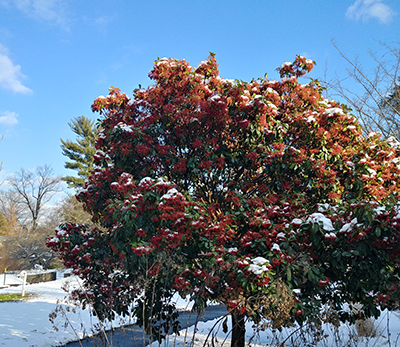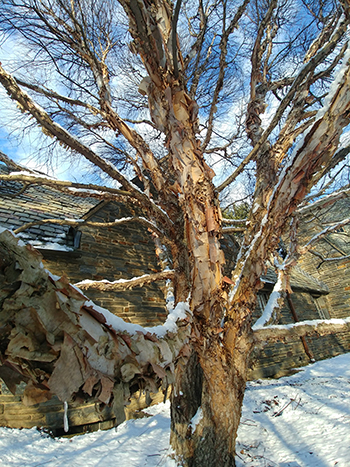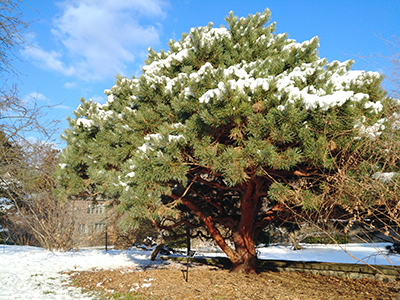
Plants of the Week: January 17

The Chinese photinia (Photinia serrulata) is an unsuspecting member of the Rosaceae family with a treat for every season. A specimen in the BioStream is in good company with fellow Rosaceae genera Sorbus and Crataegus nearby, but this tree bears little resemblance to its cousins. Because unlike most of the Rosaceae family, most Photinia species, including P. serrulata, have evergreen foliage. The small, white, 5-petaled flowers which appear in spring are a tell-tale cue of Rosaceous lineage, though. The flower buds, leaf buds and new leaves are all red, vibrant and showy. Fertilized flowers form plentiful small red fruits too, which stand out against the glossy foliage. The mottled and flaky bark is unique and unpredictable, adding further character. Photo credit: R. Payne-Meyer

Speaking of bark character, it’s hard to beat Betula nigra ‘Little King’ (sold as Fox Valley®). A squatter and slower growing cultivar of the ever popular river birch (B. nigra), this tree indeed deserves royal status. ‘Little King’ offers all of the ornamental appeal with less of the mess. The exfoliating bark is dramatic, with its huge peels of brown, white, and salmon. The presentation of the bark seems enhanced by the wide branching and short stature of this cultivar. ‘Little King’ typically grows around 10’ tall and wide, but the two trees on campus easily surpass this size. Hardy, adaptable, and easy to grow, this tree has garnered professional praise for its superior landscape qualities. B. nigra ‘Little King’ has won the Cary Award, recognizing superior plants for the New England region, and Gold Medal Award of the Pennsylvania Horticultural Society. Photo credit: R. Payne-Meyer

Impressive as B. nigra ‘Little King’ is, Pinus sylvestris ‘Watereri’ (Scot’s pine) may gives it a run for its money in the impressive bark category. This short and dense cultivar of P. sylvestris exhibits steely foliage and a flattened, irregular top. But under the dense foliage is the real treat: contorted branches decorated with a patchwork of flaking orange bark. P. sylvestris ‘Watereri’ is much slower growing than the species, but can eventually reach up to 20’. Time and thoughtful pruning makes a marvelous specimen. Remove lower branches and create windows in the plant structure to accentuate the bark. Photo credit: R. Payne-Meyer
You can find P. sylvestris ‘Watereri’ on the west side of Bond Hall on the wall above the lawn. Two impressive specimens of B. nigra ‘Little King’ grace the south side of Bond Hall and the north side of Sharples Dining Hall. The P. serratifolia outside of Willet’s Residence Hall is also first-rate; it was just awarded Heritage Tree status, a designation based on multiple criteria which recognizes trees of particular significance to the Arboretum.
Plan a visit to the Scott Arboretum today to see all these trees and much more! We are open from dawn to dusk, 365 a year.





No Comments